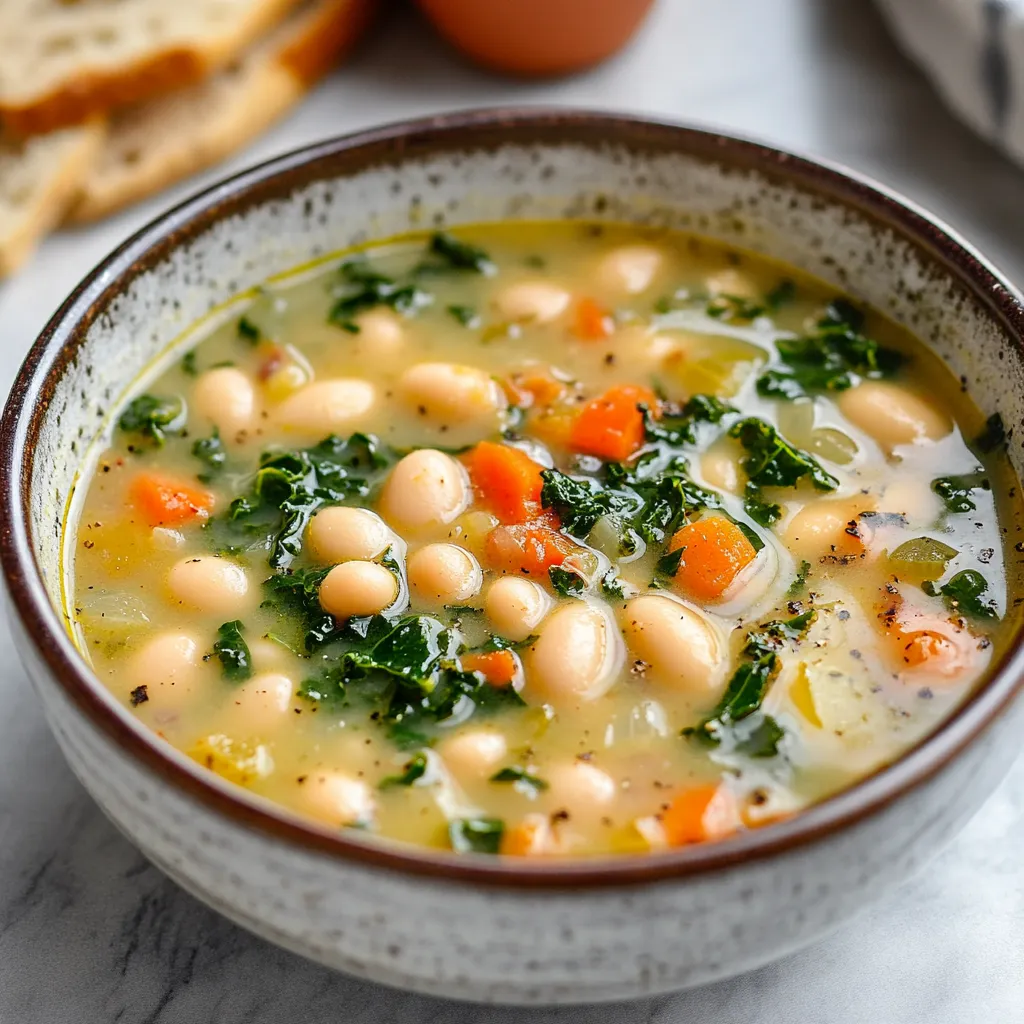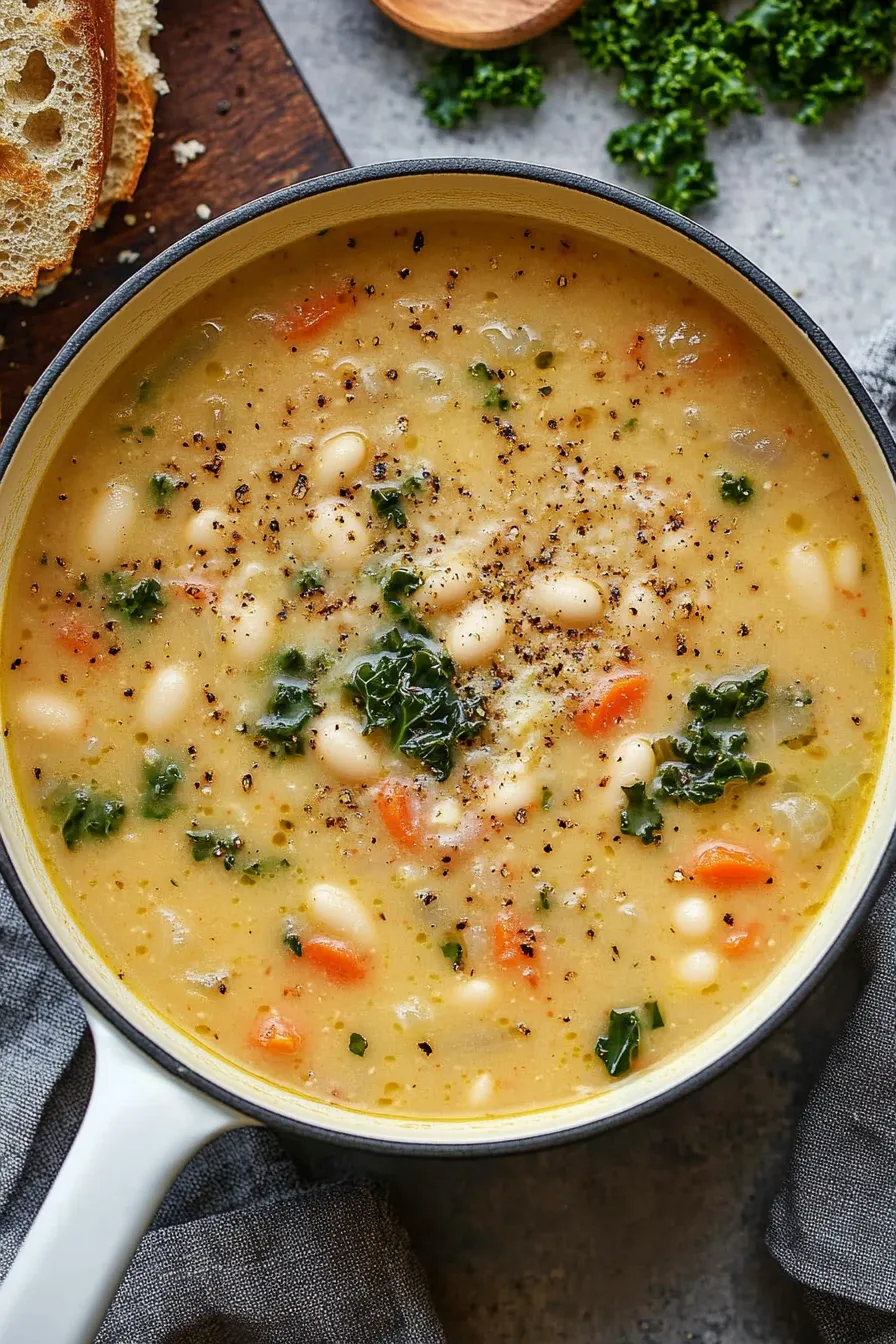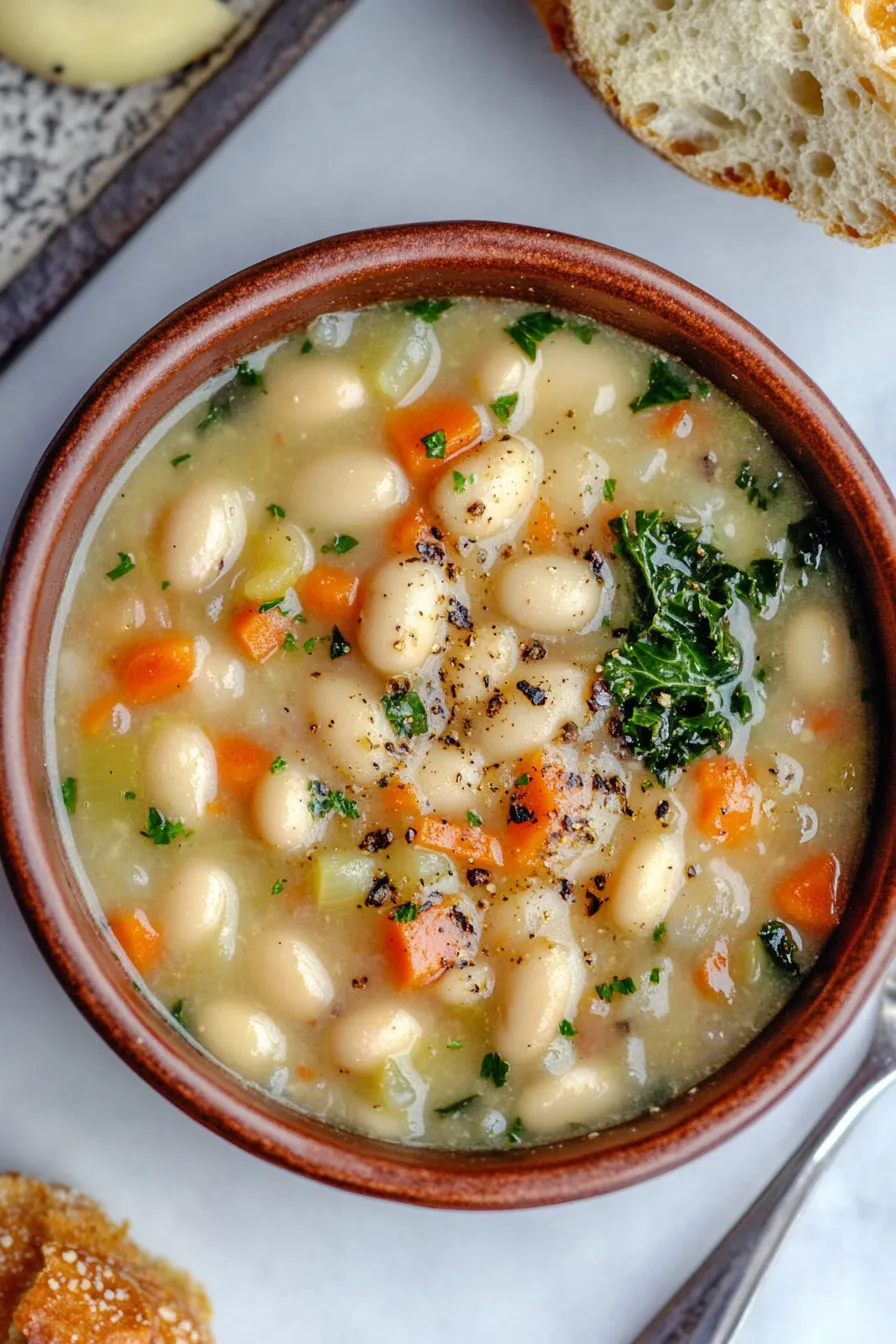 Pin it
Pin it
Rich, hearty, and deeply satisfying, this Tuscan White Bean Soup captures the essence of rustic Italian cooking. The creamy cannellini beans meld perfectly with garden-fresh vegetables and aromatic herbs, creating a soul-warming bowl that tastes like it's been simmering for hours, though it comes together in just 30 minutes.
Last winter, during a particularly cold spell, I made this soup three times in one week. My kitchen windows would steam up from the aromatic broth, and neighbors started 'dropping by' just as it was finishing on the stove.
Essential Ingredients and Selection Tips
- Cannellini beans: Choose high-quality canned beans or dried ones soaked overnight. Look for beans that appear whole and unblemished
- Fresh vegetables: The holy trinity of onion, carrot, and celery creates the foundation - organic produces noticeably better flavor
- White wine: A dry variety like Pinot Grigio works best. The alcohol cooks off, leaving behind complexity
- Fresh herbs: Bundle thyme, rosemary, and sage together for easy removal later
- Kale: Lacinato (Tuscan) kale is traditional, but any variety works. Remove tough stems before chopping
- Quality broth: Whether vegetable or chicken, choose low-sodium to control seasoning
 Pin it
Pin it
Detailed Cooking Instructions
- Building the Flavor Base
- Take your time sweating the onions until they're truly translucent and slightly golden - this builds the soup's foundation. Add garlic only after onions are softened to prevent burning. Keep the heat at medium-low, allowing vegetables to release their natural sweetness. Stir occasionally, watching for that magical moment when onions become slightly caramelized.
- Creating the Perfect Vegetable Base
- Cut carrots and celery into uniform sizes for even cooking. Allow vegetables to cook until celery loses its raw crunch but maintains some texture. Season each layer as you go - a pinch of salt here brings out vegetables' natural flavors. Let vegetables develop a slight caramelization on the bottom of the pot.
- Deglazing and Building Depth
- Pour in white wine and scrape up all the flavorful brown bits. Let wine reduce until the alcohol smell dissipates. Add herbs in a bundle for easy removal later. Introduce broth gradually, stirring to incorporate all flavors.
- Bean Integration and Simmering
- If using canned beans, add them gently to prevent breaking. Allow soup to come to a gentle simmer, never a rolling boil. Stir occasionally from the bottom to prevent sticking. Taste broth and adjust seasoning as it reduces.
- Achieving the Perfect Texture
- When blending a portion of soup, choose beans and vegetables evenly. Blend until completely smooth for the creamiest result. Return blended portion slowly while stirring. Let soup simmer an additional 5 minutes to meld textures.
 Pin it
Pin it
Growing up in a small town outside Florence, my grandmother taught me that the best soups are those that take their time developing flavor. This recipe honors that tradition while adapting to modern time constraints.
Texture and Consistency Secrets
The magic of this soup lies in its creamy texture, achieved without any cream. A crucial tip I learned from my years in restaurant kitchens is to blend just a portion of the soup - this creates a luxurious base while maintaining rustic texture. Some days, I blend a bit more for a creamier soup, especially when serving to young children who prefer smoother textures.
Seasonal Adaptations
While traditional Tuscan kitchens would use cavolo nero (Tuscan kale), I've found this soup welcomes seasonal greens beautifully. In spring, tender spinach leaves work wonderfully; in summer, Swiss chard adds color and nutrition. During winter months, I often double the carrots and celery, creating an even heartier version that satisfies deep cold-weather cravings.
Making It Ahead
The flavors in this soup actually improve overnight, making it perfect for meal prep. I often make a double batch on Sunday, freezing half in portions for quick weeknight dinners. The key is to add fresh kale only when reheating - this maintains its bright color and pleasant texture.
Serving Suggestions and Pairings
Nothing beats a thick slice of crusty sourdough bread alongside this soup. For an authentic Tuscan experience, try rubbing the bread with a raw garlic clove and drizzling it with your best olive oil before dipping it into the soup. On busy weeknights, I often add a handful of small pasta like ditalini during the last 10 minutes of cooking for a complete one-bowl meal.
 Pin it
Pin it
After years of perfecting this recipe, I still find myself craving its comforting warmth and satisfying flavors. It's become my go-to when hosting vegetarian friends or when I need a nourishing meal that doesn't require hours in the kitchen. The way the creamy beans, tender vegetables, and wilted greens come together creates something far greater than the sum of its parts.
Remember, the best soups tell a story - and this one speaks of rustic Italian kitchens, family gatherings, and the simple pleasure of a well-made meal. Every time I make it, I'm transported back to those early cooking lessons in my grandmother's kitchen, where I first learned that the most satisfying dishes often come from the humblest ingredients.
Frequently Asked Questions
- → Can I make this soup ahead of time?
- Yes! This soup actually tastes better the next day as the flavors develop. Store in the fridge for up to 4 days or freeze for up to 3 months.
- → What can I use instead of white wine?
- You can skip the wine and add an extra splash of vegetable broth with a teaspoon of lemon juice to maintain the flavor depth.
- → Can I use different beans?
- While cannellini beans work best for their creamy texture, great northern beans or navy beans make good substitutes.
- → What can I substitute for kale?
- Spinach, Swiss chard, or escarole are great alternatives. Add them at the end just like you would the kale.
- → Why blend part of the soup?
- Blending creates a creamy, thick texture while keeping some whole beans gives the soup body and makes it more satisfying.
